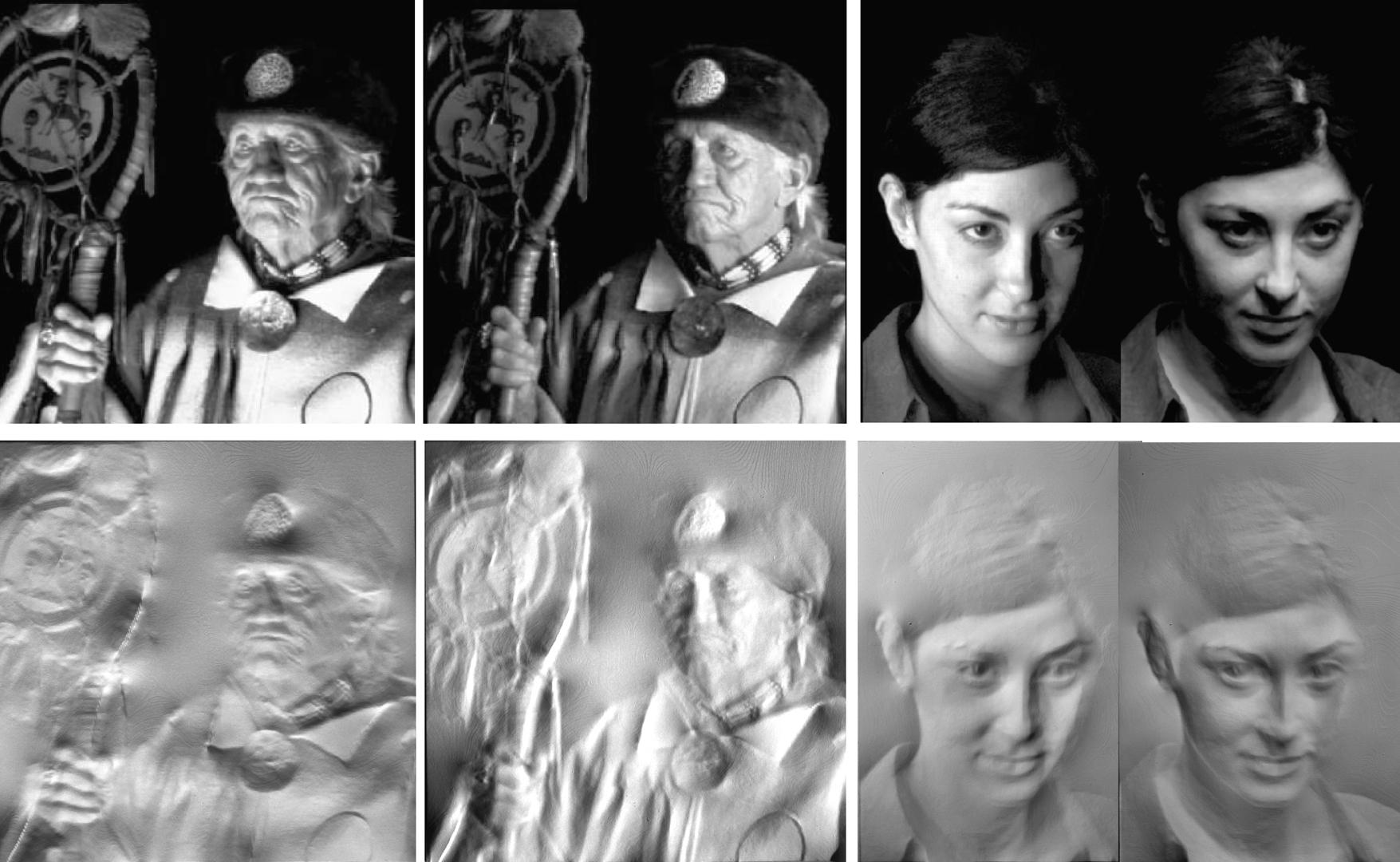“Reliefs as images” by Alexa and Matusik
Conference:
Type(s):
Title:
- Reliefs as images
Presenter(s)/Author(s):
Abstract:
We describe how to create relief surfaces whose diffuse reflection approximates given images under known directional illumination. This allows using any surface with a significant diffuse reflection component as an image display. We propose a discrete model for the area in the relief surface that corresponds to a pixel in the desired image. This model introduces the necessary degrees of freedom to overcome theoretical limitations in shape from shading and practical requirements such as stability of the image under changes in viewing condition and limited overall variation in depth. The discrete surface is determined using an iterative least squares optimization. We show several resulting relief surfaces conveying one image for varying lighting directions as well as two images for two specific lighting directions.
References:
1. Belhumeur, P. N., Kriegman, D. J., and Yuille, A. L. 1999. The bas-relief ambiguity. Int. J. Comput. Vision 35 (November), 33–44. Google ScholarDigital Library
2. Chen, H., Belhumeur, P., and Jacobs, D. 2000. In search of illumination invariants. In Proceedings of the IEEE Conference on Computer Vision and Pattern Recognition (CVPR-00), IEEE, Los Alamitos, 254–261.Google Scholar
3. Cignoni, P., Montani, C., and Scopigno, R. 1997. Computer-assisted generation of bas- and high-reliefs. J. Graph. Tools 2 (December), 15–28. Google ScholarDigital Library
4. DeCarlo, D., Finkelstein, A., Rusinkiewicz, S., and Santella, A. 2003. Suggestive contours for conveying shape. ACM Trans. Graph. 22 (July), 848–855. Google ScholarDigital Library
5. Fattal, R., Lischinski, D., and Werman, M. 2002. Gradient domain high dynamic range compression. ACM Trans. Graph. 21, 3, 249–256. Google ScholarDigital Library
6. Horn, B. K. P., Szeliski, R. S., and Yuille, A. L. 1993. Impossible shaded images. IEEE Transactions on Pattern Analysis and Machine Intelligence 15, 2, 166–170. Google ScholarDigital Library
7. Horn, B. K. P. 1970. Shape from Shading: A Method for Obtaining the Shape of a Smooth Opaque Object from One View. PhD thesis, Massachusetts Institute of Technology.Google Scholar
8. Mitra, N. J., and Pauly, M. 2009. Shadow art. ACM Transactions on Graphics 28, 5, 1–7. Google ScholarDigital Library
9. Power, J. L., West, B. S., Stollnitz, E. J., and Salesin, D. H. 1996. Reproducing color images as duotones. In Proceedings of the 23rd annual conference on Computer graphics and interactive techniques, ACM, New York, NY, USA, 237–248. Google ScholarDigital Library
10. Song, W., Belyaev, A., and Seidel, H.-P. 2007. Automatic generation of bas-reliefs from 3d shapes. In Proceedings of the IEEE International Conference on Shape Modeling and Applications 2007, IEEE Computer Society, Washington, DC, USA, 211–214. Google ScholarDigital Library
11. Sun, X., Rosin, P. L., Martin, R. R., and Langbein, F. C. 2009. Bas-relief generation using adaptive histogram equalization. IEEE Transactions on Visualization and Computer Graphics 15 (July), 642–653. Google ScholarDigital Library
12. Weyrich, T., Deng, J., Barnes, C., Rusinkiewicz, S., and Finkelstein, A. 2007. Digital bas-relief from 3d scenes. ACM Trans. Graph. 26, 3, 32. Google ScholarDigital Library
13. Zhang, R., Tsai, P.-S., Cryer, J. E., and Shah, M. 1999. Shape from shading: A survey. IEEE Transactions on Pattern Analysis and Machine Intelligence 21, 8, 690–706. Google ScholarDigital Library




